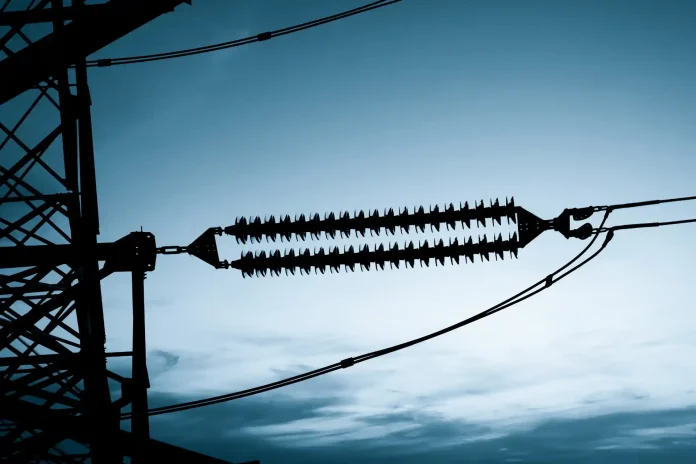Artificial intelligence (AI) is changing the ways in which companies approached their business by making the process smoother, faster, and more effective. However, this evolution is not without a catch; the huge request of energy required by the AI data centers. These facilities are exerting a growing pressure on the U.S. power grid infrastructure and creating important concerns about sustainability and grid stability. Now, let’s see how AI data centers are skewing the connected power grid in the United States, consequences, and prospects.
The Role of AI Data Centers in Today’s Tech Landscape
What Are AI Data Centers?
AI data center refers to a dedicated center that is used in providing infrastructure for meeting the computational demand of artificial intelligent applications. AI data centers are different from conventional facilities that predominantly function as repositories for data and computation resources; these centres include high performance GPUs and other related equipment to train ML algorithms and handle Big Data..
Why Do AI Data Centers Require So Much Power?
Training AI models requires computations, which are often very time consuming and power consuming processes, too. In essence, a single AI model can consume the energy required by hundreds of households within one year. This demand is aggravated by constant running of cooling systems to ensure ideal temperatures of the hardware components.
How AI Data Centers Are Distorting the U.S. Power Grid
A Surge in Energy Consumption
The amount of energy US AI data centers consume as a percentage has risen significantly over recent years. Currently, calculations in the described industry point to the fact that the power demand from these facilities is Increasing at rates of double digits per year, which distorts the distribution of framework supply.
Grid Imbalances and Local Power Strains
This is because the physical location of data centers also compounds power distribution issues. A lot of these centers are sited close to urban areas or in states that offer special rates which cause localized problems such as blackouts. For instance, cities in Texas and Virginia said they are under pressure from rapidly growing data centers that demand more energy.
Environmental Impacts of Energy-Hungry Data Centers
Increased Carbon Emissions
Though some data centers use renewable power (14%), many depend on fuel (39%). This dependency greatly burdens and contributes highly to the emission of carbons thus slowing down progress made in the fight against climate change.
Water Usage for Cooling Systems
Air conditioning in homes as well as in artificial intelligence data centers is another cause of environmental hazards. Drought-affected countries criticize themselves to utility and wastage of millions of gallons of water yearly, which in the process uninhabitable social structures, disrupt ecosystems.
Regulatory Challenges and Policy Gaps
Lack of Comprehensive Standards
Today’s regulations do not capture the energy use of AI data centers sufficiently well. Though there are standard procedures recommended for the utilization of energy in conventional data. centers, AI-specific facilities remain largely unregulated.
Policy Responses in the U.S.
Technological states themselves, are bringing in policies which will create incentives for sustainability. However, most of these effort are isolated and do not go to the root of the problem due to lack of federal supervision.
Technological Innovations to Address the Issue
Energy-Efficient Hardware
The reduction of power consumption drives manufacturers to look out for the energy-efficient GPUs and processors. NVIDIA is among the companies that are at the forefront of such products the chips mean to offer efficiency in computations regarding AI while, at the same time, consume as little energy as possible.
Green Data Centers
It is also possible to speak about green data centers and usage of renewable energy sources for data center cooling. All these centers harness power from solar, wind and hydroelectric power to enhance their energy conservation strategy.
Potential Solutions to Mitigate Grid Distortions
Transition to Renewable Energy
Yet one of the ways used most efficiently to counter the situation of grid distortion is the transfer of AI data centers on renewable energy sources. With the use of the solar and wind energy sources, such facilities are in a position to reduce on the conventional power networks.
Decentralized Energy Storage Systems
Battery storage is renewable energy that is produced when there is an excess and then distributed when there is a high demand hence less stress to the grid.
Demand Response Programs
Whenever, utilities can carry out demand response programs, meaning, by offering refunds and providing encouragements they can encourage data centers to decrease power consumption in the specific periods when there is high demand. The following can be achieved alongside the provision of programs intended to further the efficiency of energy consumption and maintain the balance of the grid.
The Economic Implications of Power Grid Strains
Rising Energy Costs
As the AI data centers consume more electricity, electricity prices for consumer and businesses too skyrocket. These are costs that are not only considerably higher but are paid disproportionately by poorer population groups, thus deepening economic inequity.
Investment in Grid Infrastructure
In this context, the improvement of an electrical framework requires qualitative and ample investments which at present are demanded to attend the energy demands. Nevertheless, these improvements cost considerable amounts and the issue of financing and continuity has emerged.
Case Studies: States Affected by AI Data Centers
Virginia: The Data Center Hub
More and more problems concerning the power supplies, and particularly the stability of the grid, are emerging in Virginia, which hosts the most data centers in the world. These effects are being mitigated by local authorities seeking to invest in renewable energy sources.
Texas: Balancing Growth and Sustainability
The state has attracted investment in data centers because of cheap power and a good business climate in Texas. But inadequate supply of electricity due to constant power shortages exemplifies the power failure on this state on how to attain development without compromising the ecology.
Public Awareness and Corporate Responsibility
Raising Awareness
Since the energy requirements of AI data centers are largely unknown among the population, the public needs to become aware of current demands and need changes.
Corporate Initiatives
Many technology powerhouses including Google and Microsoft have vowed to make their data facilities carbonless. They show that leading companies of the industry can take up the issue of sustainability in the field.
The Road Ahead: Balancing AI Innovation and Sustainability
Despite the technological development of AI, its energy consumption will continue to rise, albeit at the same pace as technology. To provide the solution to the problem it is necessary to use policy changes, new technologies, and corporate actions. Adopting renewable energy resources and other practices that involve the use of AI technology in distributing power, the United States has the potential to produce a power system in which these systems are integrated and sustainable.
Conclusion
The advanced capabilities of AI data centers are the new mainstay of industries, but pose a significant question of how they are stressing American power grid. From environmental impact, to economic pressures, the issues are not just significant, they are major. That being said there are measures that can be taken based on the collaborative effort and with commitment to sustainable development so that the benefits of the AI in the process of improving the grid can continue to propel forward but at the same time no negative impact on the environment and the stability of the power 32 grid is evident.



